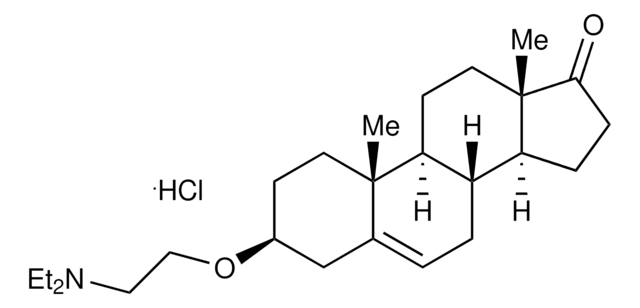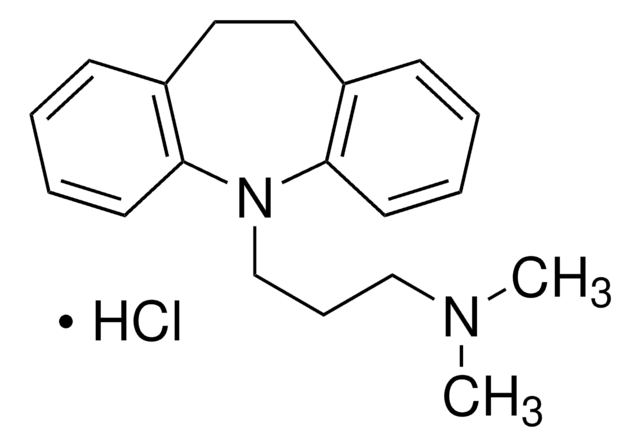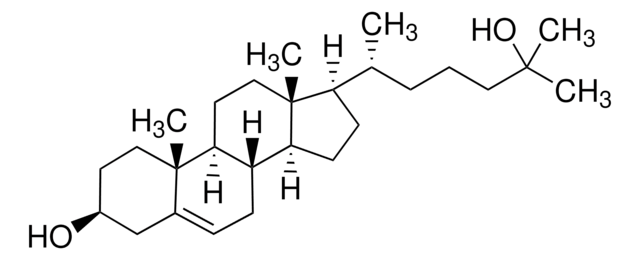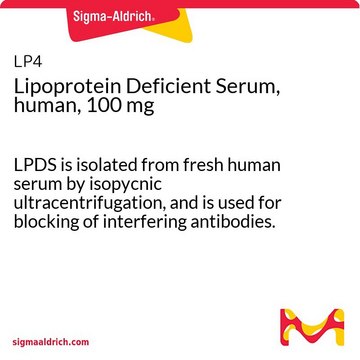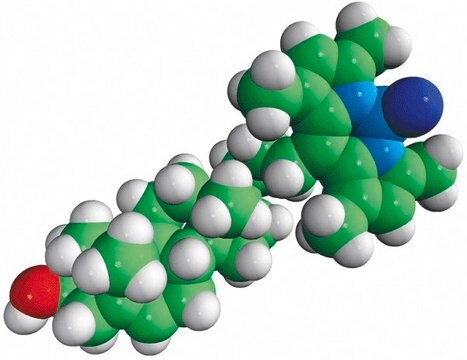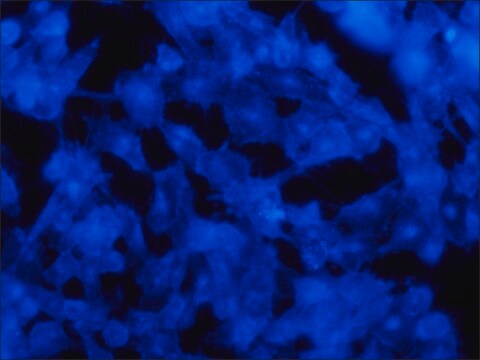U3633
U 18666A
powder
Synonym(s):
(3β)-3-[2-(Diethylamino)ethoxy]androst-5-en-17-one hydrochloride
About This Item
Recommended Products
Assay
≥98% (HPLC)
form
powder
color
white to off-white
mp
195-196.5 °C (lit.)
solubility
H2O: 10 mg/mL≥
storage temp.
2-8°C
SMILES string
Cl[H].[H][C@@]12CC=C3C[C@H](CC[C@]3(C)[C@@]1([H])CC[C@]4(C)C(=O)CC[C@@]24[H])OCCN(CC)CC
InChI
1S/C25H41NO2.ClH/c1-5-26(6-2)15-16-28-19-11-13-24(3)18(17-19)7-8-20-21-9-10-23(27)25(21,4)14-12-22(20)24;/h7,19-22H,5-6,8-17H2,1-4H3;1H/t19-,20-,21-,22-,24-,25-;/m0./s1
InChI key
GZFYZYBWLCYBMI-MYZJJQSMSA-N
General description
Application
- as a competitive inhibitor of the Niemann-Pick disease, type C (NPC2) binding partner Niemann-Pick C1 (NPC1) to treat symbiotic and aposymbiotic adult Aiptasia to study the effect of global sterol transport inhibition
- in treating seminiferous tubules to study its effects on the localization pattern of VPS35-positive vesicles
- to study the U18666A treatment effects on early endosomes and late endosomes/multivesicular bodies (MVBs)
- as an NPC1 inhibitor to test its in vivo efficacy and study its effects on filovirus entry and infection
Biochem/physiol Actions
Preparation Note
Storage Class Code
11 - Combustible Solids
WGK
WGK 3
Flash Point(F)
Not applicable
Flash Point(C)
Not applicable
Personal Protective Equipment
Regulatory Listings
Regulatory Listings are mainly provided for chemical products. Only limited information can be provided here for non-chemical products. No entry means none of the components are listed. It is the user’s obligation to ensure the safe and legal use of the product.
JAN Code
U3633-VAR:
U3633-25MG:
U3633-BULK:
U3633-5MG:
Certificates of Analysis (COA)
Search for Certificates of Analysis (COA) by entering the products Lot/Batch Number. Lot and Batch Numbers can be found on a product’s label following the words ‘Lot’ or ‘Batch’.
Already Own This Product?
Find documentation for the products that you have recently purchased in the Document Library.
Customers Also Viewed
Articles
The amount of cholesterol that is synthesized in the liver is tightly regulated by dietary cholesterol levels. LDL receptors regulate the cellular transport of lipid rich low density lipoprotein (LDL) particles.
Our team of scientists has experience in all areas of research including Life Science, Material Science, Chemical Synthesis, Chromatography, Analytical and many others.
Contact Technical Service